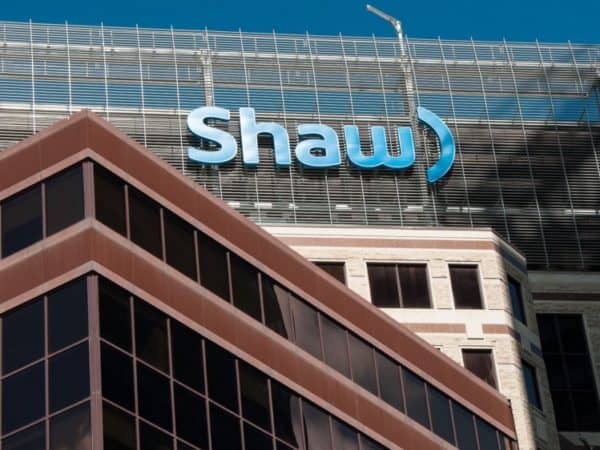Rogers deal for Shaw will go through, this investor says

The proposed merger of Rogers Communications (Rogers Communications Stock Quote, Charts, News, Analysts, Financials TSX:RCI.B) and Shaw Communications (Shaw Communications Stock Quote, Charts, News, Analysts, Financials TSX:SJR.B) passed a significant hurdle last week, with Shaw shares now finally up within inches of the sale price proposed a year ago. That makes sense since the deal in all likelihood will go through, says Jason Mann, portfolio manager at EHP Funds, who bought and sold Shaw since the merger was announced for a nice profit.
“Shaw was a merger arbitrage pick,” said Mann, speaking on BNN Bloomberg on Thursday. “Rogers is in the process of acquiring Shaw and so we bought Shaw with the view that the market was quite pessimistic on the likelihood of the merger going through.”
Last week, the Canadian Radio-television and Telecommunications Commission approved the deal first announced a year ago in mid-March, 2021, when Rogers proposed a $26-billion buyout of Shaw at $40.50 per share, saying the merger would allow the combined entity to deliver better and wider coverage for Canadians in terms of wireline and wireless broadband and network services.
But the deal has been met with plenty of opposition from critics saying it would lower competition in Canada’s telco market and ultimately lead to higher prices for consumers. Whether federal regulators will agree is still to be determined, as after the CRTC’s decision — which focused its attention solely on the broadcasting aspects of the proposed transaction — will come results from both the Competition Bureau and Innovation, Science and Economic Development Canada.
The merger would involve Rogers acquiring Shaw’s 16 cable services in Western Canada and a satellite TV business but it’s Shaw’s wireless carrier, Freedom Mobile, that’s a clear sticking point, with some saying regulators will be requiring that Rogers sell off Freedom Mobile in order to preserve competition. Freedom is currently Canada’s fourth-largest wireless carrier.
Immediately after the deal’s announcement last March, Shaw’s share price shot up from $24 to about $35 per share, which was still well below the proposed $42 takeover price. But over the past year, SJR.B has more or less steadily risen to where it now trades just under $39.
Mann says the market’s initial hesitations about the deal opened up a lane for his firm to buy Shaw
“I think [the hesitation] was because people were concerned that competition [regulators] would have a problem with the purchase of Shaw overall, and they would, but our view is that this merger is still on, even if they just bought the wireline assets. In other words, Rogers would be satisfied fully divesting the wireless assets of Shaw to complete the deal, that it was good enough on its metrics just doing that,” Mann said.
“And that ultimately appears to be how this transaction will close,” Mann said.
“Our return target was 24 per cent when we made that pick. We’ve earned most of that, so we’ve actually moved on — we don’t always stick around for the last bi of spread. It was a slightly riskier position earlier on and a lot of that risk have disappeared so we’ve taken our money,” Mann said. “It’s a good example of a merger arbitrage where they’re not always priced correctly out of the gate.”
Ahead of Shaw’s second quarter fiscal 2022 financial results due later this month, the company saw revenue for its fiscal first quarter rise by just 1.2 per cent to $1.39 billion while adjusted EBITDA rose 4.3 per cent year-over-year to $633 million. Shaw’s wireless service grew revenue by a larger 11.2 per cent, with the company adding about 55,600 new wireless subscriptions over the Q1 while wireline subscriptions dropped by about 78,100.
Speaking of the proposed merger in the company’s quarterly press release in January, Shaw CEO Brad Shaw said the combined Rogers-Shaw entity will do more for Canadians than either company could on its own.
“Together, Rogers and Shaw can build a national next-generation network that will offer robust and effective competition over the long-term, and bridge Canada’s digital divide benefiting rural, remote and indigenous communities. The resources and network of the combined company will help accelerate Canada’s digital economy and stimulate greater economic diversification in Western Canada,” Shaw said.
Shaw, with a $19 billion market cap and paying out a three per cent dividend yield compares to Rogers at a $36 billion market cap and currently a yield at 2.8 per cent. Last year, Shaw returned about 17 per cent while so far in 2022 the stock is up just one per cent. After a poorer showing last year, Rogers’ share price has shot up in recent months and currently sits at a year-to-date return of 34 per cent.

Staff
Writer

